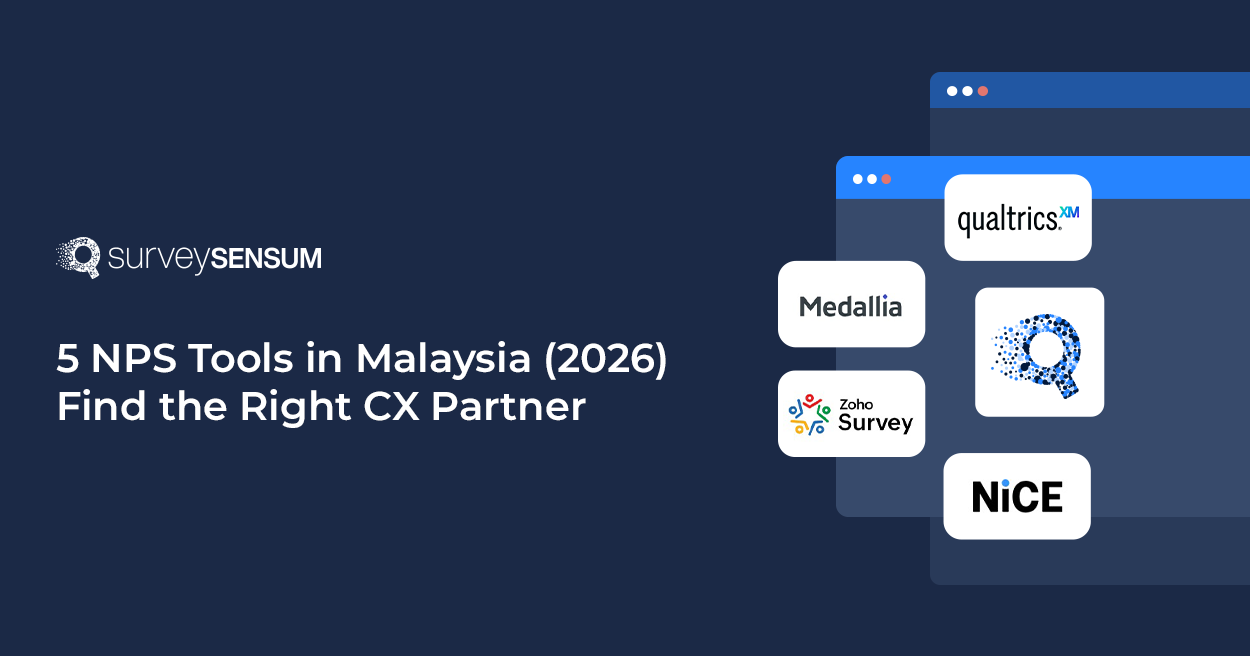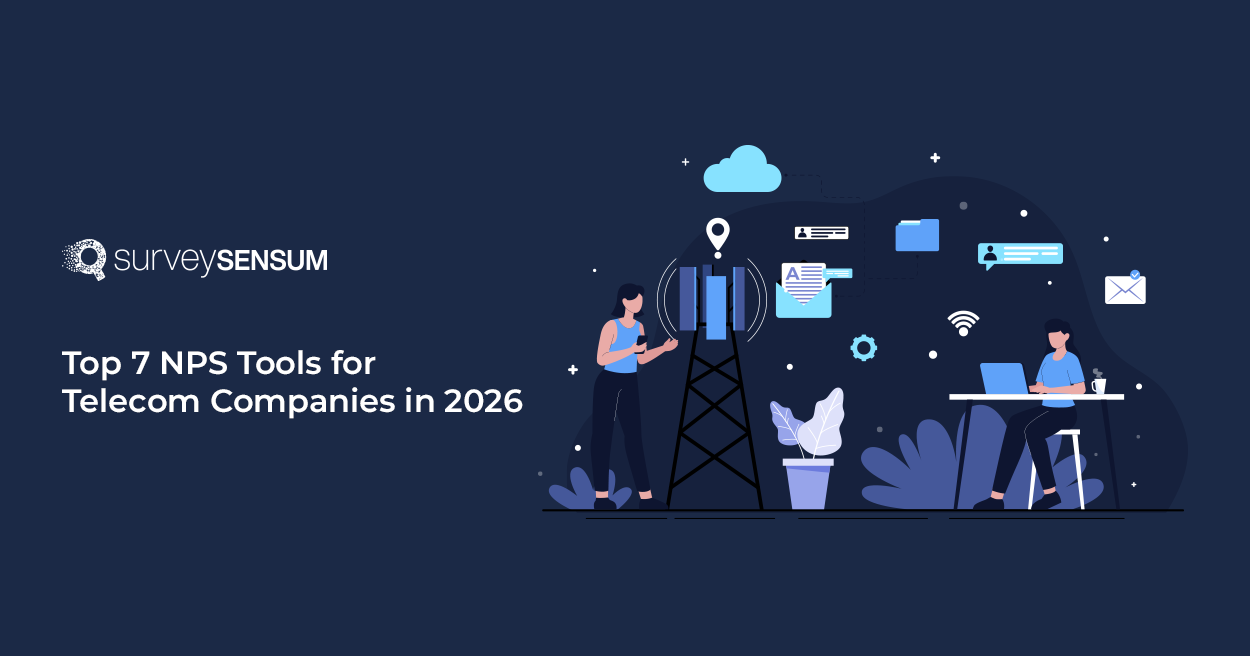

What are open-ended or closed-ended questions? How to differentiate between them? When to use each of them in your survey?
You must have wondered about these while designing your survey or questionnaire. Understanding their difference and use cases will only help you create an effective survey design and gather relevant data for analysis.
So, let’s answer these questions and understand the key differences between open ended vs closed ended questions.
What is an Open-Ended Question?
Open-ended questions are a type of survey questions that allow respondents the freedom to answer in their own words, without being restricted to predefined options.
For example,
1. What feature do you like most about our product?
2. Please let us know how you can improve our delivery service.
3. How can we improve our customer service experience?
As you can see, these questions don’t have predefined options that respondents need to choose from. They encourage respondents to freely express their thoughts and opinions by allowing them to provide detailed, in-depth, and nuanced responses.
But what are the benefits of adding them to a survey?
Advantages of Using Open-Ended Questions In a Survey
1. Open-ended questions allow respondents to express their experiences, thoughts, or opinions in detail, allowing businesses to uncover the “why” behind certain behaviors, experiences, and preferences.
2. As open-ended questions are detailed, they can reveal ideas and suggestions for improvement and also help you identify key pain points of your respondents for further action.
3. As respondents are not constricted to predefined options, it provides flexibility and the ability for respondents to articulate their unique viewpoints.
4. These questions are particularly helpful when it comes to understanding the underlying reasons behind a respondent’s decision or dissatisfaction. They can help identify root causes that closed-ended questions might overlook.
Let’s now understand the same about close-ended questions.
What is a Close-Ended Question?
Close-ended questions are the opposite of open-ended questions. Instead of allowing respondents the freedom and flexibility to answer, close-ended questions provide them with predefined options to choose from which can be multiple or singular.
For example,
1. On a scale of 1-5, please rate your satisfaction with the delivery process.
2. Did you find the customer service helpful? (Yes/No)
3. Which feature of the product did you find most helpful? (Feature A, B, or C)
As you can see from the examples, these questions are structured to prompt a specific response, often in the form of yes or no, multiple choices, rating scales, and other fixed options. These are particularly useful to gather quantitative data that is easy to interpret and analyze.
But what are the benefits of adding them to a survey?
Advantages of Using Close-Ended Questions In a Survey
1. Close-ended questions are easy to analyze as they gather straightforward, measurable, and quantifiable data. Since the answers are predefined, you can quickly summarize data, identify patterns, and generate statistical reports without much effort.
2. As these questions contain predefined options, it becomes easy for them to answer quickly without requiring much thought or time. This helps in increasing the response rate.
3. Closed-ended questions reduce ambiguity by offering fixed response options. This ensures that all respondents interpret the question similarly, resulting in more uniform and reliable data.
4. For large-scale surveys, closed-ended questions make it easier to manage and analyze responses from a large number of participants, as the predefined choices standardize the data.
Now that their advantages are clear, let’s understand their differences in order to understand their use cases.
Open Ended vs Closed Ended Questions: What’s the Difference
The basic difference between open ended questions vs closed ended questions is that the former provides respondents with the opportunity and flexibility to express their experiences and opinions in a free manner. While the latter, provides predefined options for respondents to choose from, allowing them to quickly wrap up the surveys. Let’s explore these differences in a detailed manner.
| Aspects | Open-ended Questions | Close-Ended Questions |
| Response Type | Free form responses | Predefined options (Yes/No, multiple choices, etc) |
| Insights | Provides detailed, nuanced, and qualitative insights | Provides measurable and quantitative insights |
| Effort | Requires more time and thought to answer | Requires minimal time as thought to answer |
| Ease of Analysis | Requires text analysis or categorization to analyze and identify a recurring theme | Quick to analyze with statistical methods |
| Flexibility | Flexible as respondents can express themselves without constraints | Limited as responses are limited to predefined choices |
| Use Case | When exploring opinions, feelings, or new ideas | When gathering clear, measurable, and standardized data |
| Open Ended Questions vs Closed Ended Questions Examples | “What do you like most about our product?” | “Did you find our product useful? (Yes/No)” |
Create effective surveys where you don’t have to start from scratch with SurveySensum’s DIY survey builder. Design surveys with different question types and industry-based templates in under 5 minutes!
Now that the difference between open ended vs closed ended questions is clear, let’s understand their use cases and when to use each of them in a survey.
Open Ended vs Closed Ended Questions: When To Use
Choosing between open ended questions or closed ended questions depends on the type of survey you want to create, the data you want to gather, and your survey goals. Here’s an insight into when to use these types of questions in your survey.
When To Use Open-Ended Questions?
1. Exploratory Research: Open-ended questions are ideal during the initial stages of research when you’re trying to explore a new topic. They help uncover insights that may not have been considered previously and can guide further research directions.
For example, if you are launching a new product, asking open-ended questions can help identify potential features or customer pain points.
2. Detailed Feedback Collection: Use open-ended questions to gather detailed feedback, suggestions, or complaints. They enable respondents to articulate their thoughts fully, providing a richer understanding of their perceptions.
For instance, after a product launch, asking customers what they like or dislike about it can help you identify key pain points and areas of improvement.
3. Understanding The “Why”: When you need to grasp the reasoning behind a respondent’s choice, open-ended questions are invaluable.
For example, if a customer rates your service poorly, asking them to explain their reasoning can help pinpoint specific issues.
4. Building Qualitative Data: When qualitative analysis is essential, such as identifying themes or patterns in customer feedback, open-ended questions are the way to go. They allow for in-depth analysis of responses, revealing underlying sentiments and motivations.
When To Use Close-Ended Questions?
1. Quantitative Analysis: Closed-ended questions are best when you need to collect data that can be easily quantified and analyzed statistically. They enable you to perform comparisons, calculate averages, and generate insights that can inform business decisions.
2. Specific Information: Use closed-ended questions when looking for specific data points or straightforward feedback. They are particularly effective for gathering data that requires clear, concise answers, such as demographic information or usage patterns.
3. Time Constraints: Closed-ended questions allow respondents to complete surveys more quickly, making them ideal for situations where time is limited.
For example, in a customer satisfaction survey, quick responses help maintain engagement and improve customer experience.
4. Comparative Analysis: When benchmarking and comparing results across different demographics or time periods, closed-ended questions facilitate easier analysis. They enable you to track changes over time and assess the effectiveness of different strategies or initiatives.
Conclusion: The Combination Approach
When it comes to creating an effective survey, it is always advisable to use a combination of open vs closed ended questions and create a balance between them, rather than using only one type and gathering a singular type of data.
The right mix of both question types can lead to a richer understanding of your audience and more effective strategies for meeting their needs. Start with closed-ended questions for structured data and follow up with open-ended questions for deeper insights. This balanced approach allows you to gather both quantitative and qualitative data, providing a comprehensive view of the respondents’ perspectives.















